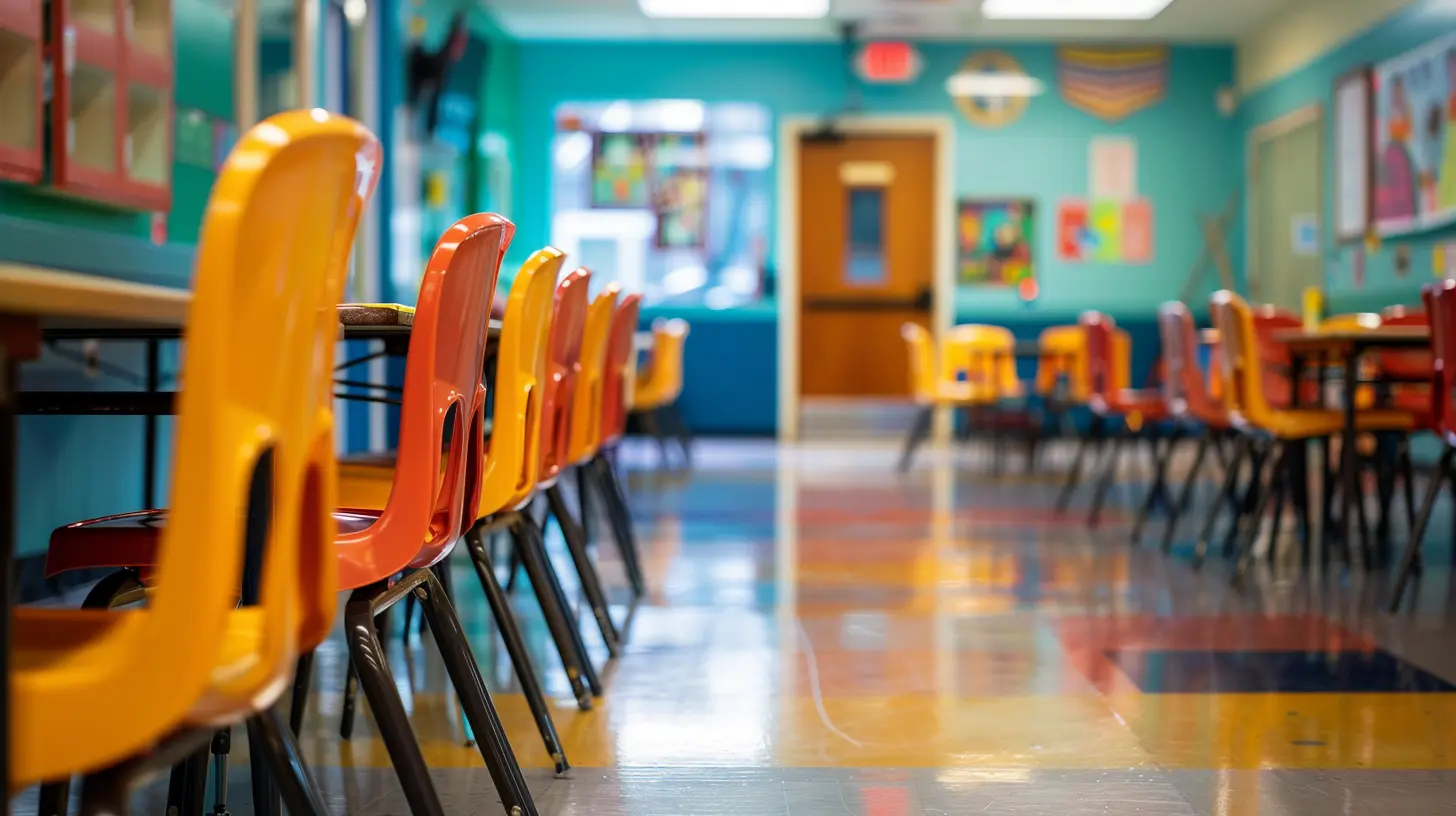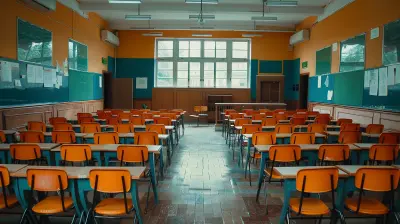18 April 2025
Education is the backbone of a thriving society, yet many schools across the U.S. struggle due to a lack of funding. Without the necessary financial resources, schools find it difficult to provide quality education, hire skilled teachers, or even maintain basic infrastructure. This is where federal grants come into play. But how exactly do they help? Let’s break it down. 
Understanding Federal Grants
Before diving into the impact of federal grants, let's get clear on what they actually are. A federal grant is essentially financial assistance provided by the government to support public services, including education. Unlike loans, they don’t require repayment, making them a lifeline for underfunded schools.How Do Federal Grants Work?
Federal education grants are typically allocated based on need. The government assesses schools that lack adequate funding due to low property tax revenue, high poverty rates, or other economic challenges. These grants are then distributed to ensure that students in these schools have access to quality education.Sounds great, right? But there's more to it. 
The Dire Need for Federal Grants in Schools
Some schools receive more funding than others simply because they are located in wealthier communities. Schools in low-income neighborhoods, on the other hand, often depend heavily on federal grants to maintain basic educational standards. Here’s why these grants are so crucial:1. Bridging the Funding Gap
Public schools primarily get their funding from local property taxes. This means schools in affluent areas receive more money, while those in lower-income areas struggle. Federal grants help level the playing field by injecting funds where they are needed most.2. Providing Adequate Resources
Imagine a school where students don’t have enough textbooks, classrooms are overcrowded, and computers are outdated. This isn't just a hypothetical scenario—it’s a reality for many schools across the country. Federal grants help fund classroom resources, technology, and even extracurricular activities that are essential for a well-rounded education.3. Supporting Teacher Salaries and Training
Teaching is one of the most impactful professions, but underfunded schools often can't afford to pay competitive salaries. This leads to high turnover rates and fewer experienced teachers. Federal grants help provide teachers with better salaries and professional development opportunities so they can offer high-quality education to students.4. Enhancing Special Education Programs
Students with disabilities require specialized instruction and resources, which can be costly. Federal grants such as the Individuals with Disabilities Education Act (IDEA) provide funding to ensure these students get the support they need. Without these grants, many special education programs wouldn’t exist.5. Investing in After-School and Meal Programs
For many students, school meals are their main source of daily nutrition. Similarly, after-school programs provide a safe environment for students while parents are at work. Federal grants help fund these essential programs, ensuring that students have access to both nourishment and academic support beyond regular school hours.
Types of Federal Grants Supporting Schools
Now that we’ve established why these grants are needed, let's look at the different types available to underfunded schools.1. Title I Grants
Title I is one of the biggest federal education programs. It’s designed to help schools with a high percentage of low-income students by providing additional funding for teachers, resources, and intervention programs aimed at improving student achievement.2. Individuals with Disabilities Education Act (IDEA) Funding
This grant specifically supports students with disabilities by providing funding for special education programs, teacher training, and accessibility resources. Without IDEA funding, many schools wouldn’t have the means to accommodate students with special needs.3. School Improvement Grants (SIG)
Schools that consistently struggle with student performance can receive SIG funding. These grants aim to improve academic outcomes by enabling schools to implement new teaching strategies, hire additional staff, and upgrade classroom technology.4. Federal Pell Grants (For Higher Education Readiness Programs)
While generally used for college students, some Pell Grant funds are allocated to early education programs that prepare high school students—especially those from disadvantaged backgrounds—for higher education.5. 21st Century Community Learning Centers (CCLC) Grants
These grants fund after-school programs that provide academic support, enrichment activities, and a safe environment for students after regular school hours. They are crucial for students who might not have educational support at home.
How Do These Grants Actually Impact Students?
It’s easy to talk about grants in a broad sense, but what do they really mean for students on a day-to-day basis? Let’s break it down.1. Better Learning Environments
A well-funded school has modern classrooms, up-to-date technology, and comfortable learning spaces. Imagine trying to learn in a school with broken desks, no air conditioning, and outdated textbooks. Federal grants help schools improve their facilities so students can focus on learning rather than struggling with poor conditions.2. Increased Graduation Rates
Schools with more resources can provide better academic support, tutoring programs, and extracurricular activities—all of which contribute to higher graduation rates. When students get the help they need, they are more likely to stay in school and succeed.3. Improved Teacher Morale
Happy teachers make for better classrooms. When schools have enough funding to pay competitive salaries, provide training, and reduce class sizes, teachers are more motivated and better equipped to help students succeed.4. More Opportunities for Low-Income Students
Students from wealthy districts often have access to SAT prep courses, college counseling, and extracurricular programs that improve their chances of success. Federal grants help level the playing field by providing similar opportunities to students in lower-income areas.Challenges in Accessing Federal Grants
While federal grants are a valuable resource, they aren’t without challenges.1. Complex Application Processes
Many schools lack the administrative support needed to apply for federal grants. The application process can be complicated, and without dedicated grant writers, schools may miss out on funds they desperately need.2. Insufficient Funding
The demand for federal grants often exceeds the available funds. Many schools qualify for grants but only receive a fraction of what they need, forcing them to make difficult budgeting decisions.3. Regulatory Constraints
Federal grants come with strict rules on how the money can be spent. While this ensures accountability, it can also limit a school’s ability to address its most pressing needs.What More Can Be Done?
It’s clear that federal grants are a critical component of school funding, but there’s always room for improvement. Here are a few ways the system can get better:- Increase funding allocations: More federal funding should be directed towards underfunded schools to truly bridge the gap.
- Simplify the application process: Making it easier for schools to apply for grants ensures they can actually access available resources.
- Provide financial literacy training: Schools should be given the resources and training to manage their funding efficiently.
Conclusion
Federal grants play a vital role in supporting underfunded schools across the U.S. by providing much-needed financial support for teachers, students, and educational programs. While challenges remain in accessing and utilizing these funds, they remain a beacon of hope for thousands of schools struggling with budget constraints.At the end of the day, every child deserves access to a quality education, regardless of their zip code. Federal grants are a crucial step toward making that dream a reality.






Mary Garcia
Federal grants are vital for empowering underfunded schools and students.
April 25, 2025 at 11:07 AM